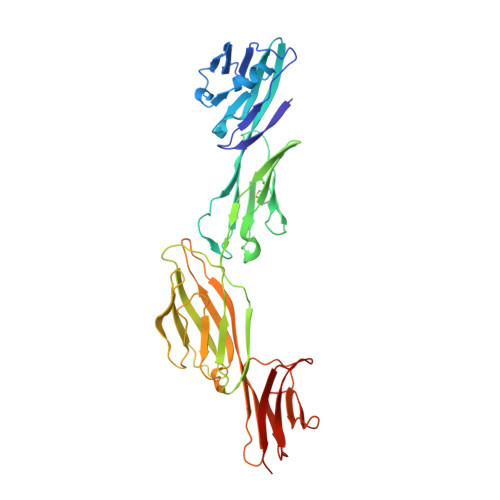Dimeric association and segmental variability in the structure of human CD4.
Wu, H., Kwong, P.D., Hendrickson, W.A.(1997) Nature 387: 527-530
- PubMed: 9168119
- DOI: https://doi.org/10.1038/387527a0
- Primary Citation of Related Structures:
1WIO, 1WIP, 1WIQ - PubMed Abstract:
CD4 is a co-receptor in the cellular immune response. It increases the avidity of association between a T cell and an antigen-presenting cell by interacting with non-polymorphic portions of the complex between class II major histocompatibility complex (MHC) and T-cell receptor (TCR) molecules, and it contributes directly to signal transduction through its cytoplasmic association with the lymphocyte kinase Lck. CD4 also serves as the high-affinity receptor for cellular attachment and entry of the human immunodeficiency virus (HIV). The extracellular portion of CD4 comprises four immunoglobulin-like domains (D1-D4). This part of human CD4 (residues 1-369) has been characterized as a recombinant soluble protein (sCD4), and crystal structures have been described for the human D1D2 fragment and for the rat D3D4 fragment. We have now determined the structures of intact sCD4 in three crystal lattices. These structures have a hinge-like variability at the D1D2 to D3D4 junction that might be important in immune recognition and HIV fusion, and a common dimeric association through D4 domains. Dynamic light scattering measurements and chemical crosslinking of sCD4 corroborate dimerization at high protein concentration. We suggest that such dimers mayhave relevance as mediators of signal transduction in T cells.
- Department of Biochemistry and Molecular Biophysics, Columbia University, New York, New York 10032, USA.
Organizational Affiliation:
















